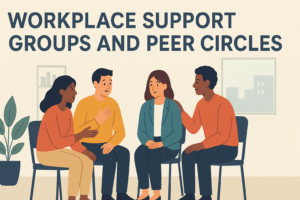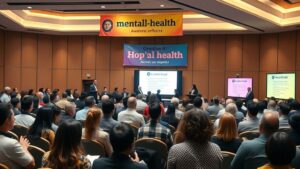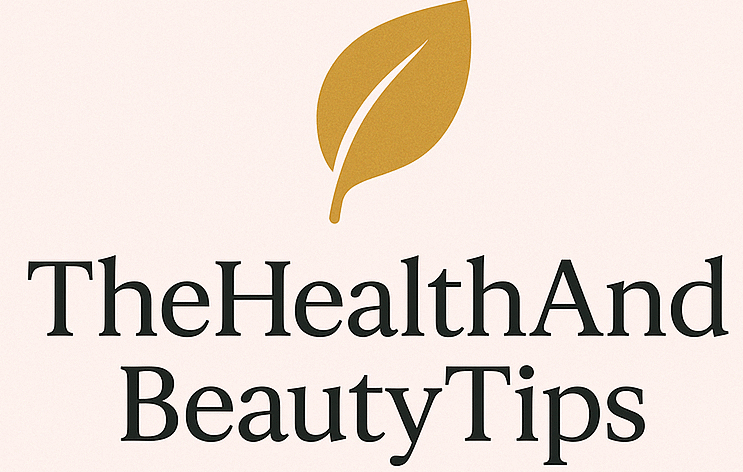In today’s fast-paced, highly competitive, and technology-driven world, mental health has become one of the most important workplace topics. While physical health programs have been part of employee benefits for decades, mental health awareness has only recently started gaining the attention it deserves. According to the World Health Organization (WHO), an estimated 15% of working-age adults were living with a mental disorder in 2024, and stress, anxiety, and depression remain the leading contributors to lost productivity and absenteeism. Top 10 Mental Health Awareness
As we step into 2025, businesses are realizing that supporting employee well-being goes beyond offering gym memberships or flexible schedules—it requires a culture of empathy, awareness, and proactive engagement. Mental health awareness activities not only help employees feel valued and supported but also drive productivity, loyalty, and innovation within organizations. A company that prioritizes mental well-being is far more likely to retain top talent and foster long-term growth.
The top 10 workplace activities that organizations can implement in 2025 to spread awareness, reduce stigma, and create healthier, happier work environments. Whether you’re an HR leader, a manager, or an employee interested in positive change, these strategies can help transform your workplace into a supportive space for mental health. Best supplements for glowing skin and anti-aging?
1. Mental Health Awareness Workshops and Training
One of the most effective ways to normalize mental health conversations in the workplace is by conducting awareness workshops and training sessions. These events bring in experts—such as psychologists, therapists, or certified trainers—to educate employees on common mental health issues, coping strategies, and available resources.
The primary benefit of such training is that it removes stigma. Many employees hesitate to talk about stress, anxiety, or depression because they fear being judged or misunderstood. Structured workshops provide factual information and practical tools for stress management, mindfulness, emotional intelligence, and resilience.
Workshops can be designed for both employees and managers. For instance, managers can learn how to recognize early signs of burnout, support struggling team members, and create psychologically safe spaces. Employees, on the other hand, gain strategies for balancing workloads, improving focus, and communicating openly about challenges.
In 2025, many companies are shifting to hybrid workshops—a mix of in-person and online training—so employees across different regions can participate. Organizations can also make use of interactive digital platforms with polls, breakout rooms, and real-time Q&A sessions to keep employees engaged.
By regularly scheduling workshops (quarterly or biannually), companies can build long-term cultural shifts, where mental health discussions are as natural as physical health or career development conversations.
2. Employee Mental Health Check-In Programs
Beyond formal training, organizations need consistent, everyday practices to support employee well-being. One of the simplest yet most effective methods is introducing mental health check-in programs.
These check-ins can take many forms: short surveys, wellness pulse checks, or one-on-one conversations between managers and employees. The purpose is not to pry into private details but to provide a safe space where employees feel comfortable expressing how they are doing—mentally, emotionally, and physically.
For managers, check-ins offer valuable insights into team morale and potential stressors. For employees, they reinforce the idea that the company genuinely cares about their well-being. In 2025, with advanced HR tech platforms and AI-driven tools, check-ins can be automated to measure stress levels, burnout risk, and engagement.
To make these programs effective, it’s important to:
Ensure confidentiality and anonymity when needed.
Train managers to respond empathetically rather than judgmentally.
Offer follow-up actions such as counseling resources or adjusted workloads.
When check-ins are consistent, employees feel more connected, valued, and supported, leading to higher retention rates and better performance.
3. Mindfulness and Meditation Sessions
With increasing distractions, digital fatigue, and high-pressure workloads, mindfulness and meditation have become crucial tools for workplace mental health. Mindfulness sessions involve practices like deep breathing, body scans, or guided meditations that help employees slow down, refocus, and reduce stress.
In 2025, many organizations are embedding mindfulness breaks into daily work routines. For example, companies can host weekly 15-minute guided meditation sessions (in-person or via Zoom). Others may provide access to popular apps like Headspace or Calm as part of their employee benefits package.
The benefits of mindfulness go beyond stress relief. Research shows that regular mindfulness practices improve emotional regulation, enhance focus, and even reduce interpersonal conflicts at work. Employees who practice mindfulness often feel calmer, more resilient, and better able to handle workplace challenges.
Some organizations combine mindfulness with yoga sessions, journaling activities, or gratitude circles, giving employees multiple ways to slow down and reset. For companies with global teams, virtual mindfulness challenges (like “7 Days of Mindful Breathing”) can encourage participation across regions.
By making mindfulness part of company culture, workplaces not only reduce stress but also foster creativity, innovation, and positive relationships.

4. Flexible Work Hours and Remote Wellness Days
One of the most practical ways to support mental health is by acknowledging that employees have different rhythms, responsibilities, and needs. Flexible work hours and wellness days give employees the autonomy to manage their time in ways that reduce stress and prevent burnout.
In 2025, forward-thinking organizations are going beyond traditional remote work policies by introducing “mental wellness days”—paid time off specifically dedicated to rest, recovery, or personal care. Unlike sick leave or vacation, wellness days acknowledge that mental health requires proactive attention, not just crisis intervention.
Flexible schedules also allow employees to better manage personal responsibilities, such as childcare, medical appointments, or exercise routines, without feeling guilty or overextended. Hybrid setups—where employees can split their week between office and home—are increasingly popular, especially in industries where creativity and focus are essential.
The key is to implement these policies thoughtfully. Clear communication, trust between managers and teams, and equitable access are critical to ensuring that flexibility doesn’t lead to uneven workloads or resentment.
Ultimately, flexible schedules and wellness days boost morale, reduce absenteeism, and enhance employee loyalty, making them a vital part of mental health awareness in 2025.
5. Workplace Support Groups and Peer Circles
Sometimes, the best support doesn’t come from managers or HR—it comes from peers who understand and relate to each other’s experiences. Workplace support groups and peer circles are safe, informal spaces where employees can share stories, challenges, and coping strategies.
In 2025, many organizations are introducing employee resource groups (ERGs) dedicated to mental health. These groups often host monthly meetings, invite guest speakers, and run awareness campaigns. Peer circles may focus on specific challenges, such as managing stress, balancing work and family, or navigating chronic illness. Top 10 Mental Health Awareness
Support groups normalize conversations about mental health. When employees hear colleagues share experiences of anxiety, burnout, or depression, it reduces stigma and encourages others to seek help without fear of judgment.
To make peer circles effective, organizations should:
Provide trained facilitators or mental health champions.
Ensure confidentiality and respect.
Offer hybrid participation options for remote employees.
By fostering a sense of community and belonging, workplace support groups can significantly reduce isolation and empower employees to take charge of their well-being.

6. Wellness Challenges and Mental Health Campaigns
Engagement-driven activities such as wellness challenges are a fun and impactful way to raise mental health awareness. These challenges encourage healthy habits while promoting team bonding.
Examples include:
30 Days of Gratitude – employees share daily reflections.
Step Count Challenges – promoting physical activity for mental well-being.
Digital Detox Weeks – encouraging employees to reduce screen time.
Acts of Kindness Campaigns – spreading positivity within the workplace.
In 2025, gamification is a huge trend in corporate wellness. Companies use leaderboards, apps, and incentives (like gift cards or wellness credits) to encourage participation. Campaigns can also be tied to global events like Mental Health Awareness Month (May) or World Mental Health Day (October 10).
Wellness challenges not only improve employee engagement but also strengthen workplace culture. They remind employees that mental health is a shared responsibility and that small, consistent actions can make a big difference.
7. Access to Mental Health Resources and Counseling
No awareness initiative is complete without direct access to professional help. In 2025, organizations are increasingly offering comprehensive Employee Assistance Programs (EAPs) that include counseling sessions, therapy coverage, and 24/7 helplines.
Making counseling accessible removes barriers for employees who might otherwise struggle to find or afford mental health support. Virtual therapy platforms like BetterHelp and Talkspace have made it easier than ever for employees to connect with licensed professionals confidentially.
Employers can also create digital resource libraries with guides, videos, and self-assessment tools. These resources empower employees to learn about mental health on their terms.
Importantly, companies must promote these resources actively—many employees are unaware of the services available to them. Regular reminders, email campaigns, and HR-led orientations can ensure employees know where to turn when they need help.
By investing in counseling and resources, workplaces show that they are not just promoting awareness but also providing real solutions for those in need.
8. Mental Health Awareness Events and Guest Speakers
Hosting special events dedicated to mental health is another powerful strategy. These events can take the form of guest lectures, panel discussions, or storytelling sessions. Inviting psychologists, wellness coaches, or individuals who have overcome mental health challenges can inspire employees and provide fresh perspectives.
In 2025, many companies are using hybrid event models, allowing employees from multiple regions to join virtually. Events can cover topics like overcoming burnout, building resilience, or navigating work-life balance.
Storytelling, in particular, has a profound impact. When leaders or colleagues share their journeys with mental health, it creates empathy, reduces stigma, and fosters authenticity within workplace culture.
Events can also be interactive. For instance, companies can host mental health fairs featuring resource booths, yoga demos, and mindfulness workshops. These events highlight that mental health is not a one-time discussion but an ongoing priority.
By making events engaging, diverse, and inclusive, organizations can reinforce the message that mental well-being is essential to workplace success.

9. Promoting Work-Life Balance Through Policy
While activities and events are valuable, true change comes from organizational policy. Workplaces that enforce policies supporting work-life balance send a strong message: mental health matters here.
Examples of supportive policies include:
Capping overtime hours to prevent burnout.
Enforcing “no emails after office hours” rules.
Offering parental leave and caregiving support.
Providing financial wellness programs to reduce stress.
In 2025, forward-thinking organizations are also experimenting with 4-day work weeks and meeting-free days, allowing employees to focus without constant interruptions. These policies reflect a long-term commitment to well-being, not just short-term initiatives.
HR leaders play a critical role in ensuring policies are fair, transparent, and consistently enforced. By promoting work-life balance, organizations not only improve mental health awareness but also increase employee satisfaction, innovation, and loyalty.
10. Mental Health Awareness Month Celebrations
Dedicating a full month to mental health awareness reinforces commitment and creates momentum for lasting change. May, recognized as Mental Health Awareness Month, is the perfect opportunity for workplaces to launch campaigns, events, and initiatives.
Activities during this month might include:
Weekly wellness workshops.
Employee storytelling campaigns.
Charity fundraisers for mental health organizations.
Interactive challenges and recognition awards.
CDC – Workplace Health Promotion: Mental Health
By making Mental Health Awareness Month a company-wide celebration, organizations highlight that mental health is not a side topic but a core workplace value.
In 2025, many companies are taking a creative approach—using social media campaigns, podcasts, or employee blogs to spread awareness beyond the office. This not only helps employees internally but also positions the company as a mental health advocate in society.
Celebrating Mental Health Awareness Month is the final step in weaving awareness into the fabric of company culture.
Conclusion
Workplace mental health awareness is not a passing trend—it’s a necessity in 2025. The modern workplace is full of challenges: rapid technological change, hybrid schedules, and increasing expectations. Without proper support, employees are at risk of burnout, disengagement, and declining productivity.
The top 10 activities we’ve explored—ranging from workshops and check-ins to wellness days and awareness events—are practical, impactful, and adaptable for organizations of all sizes. When implemented with sincerity and consistency, these activities do more than reduce stress; they create workplaces where employees feel safe, valued, and empowered to thrive.
By prioritizing mental health, organizations not only support individual employees but also build stronger, more resilient teams ready to take on the challenges of the future.
FAQs:
- Why is mental health awareness important in the workplace?
Mental health awareness ensures employees feel supported, reduces stigma around mental illness, and improves productivity, engagement, and retention. A healthy workforce is a successful workforce. - How can small businesses promote mental health awareness without a big budget?
Small businesses can focus on low-cost initiatives like peer support groups, flexible schedules, wellness challenges, and access to free online resources. Even simple gestures like regular check-ins make a difference. - What role do managers play in mental health awareness?
Managers act as first responders. They set the tone for team culture, notice early signs of burnout, and provide empathy and flexibility when employees are struggling. Training managers is crucial for success. - What are the benefits of mindfulness sessions at work?
Mindfulness reduces stress, improves focus, and enhances emotional regulation. Employees who practice mindfulness are more resilient and collaborative, contributing positively to team dynamics. - How often should companies organize mental health workshops?
Ideally, at least once every quarter. Regular workshops keep the conversation alive, provide updated tools, and reinforce the company’s long-term commitment to employee well-being.

